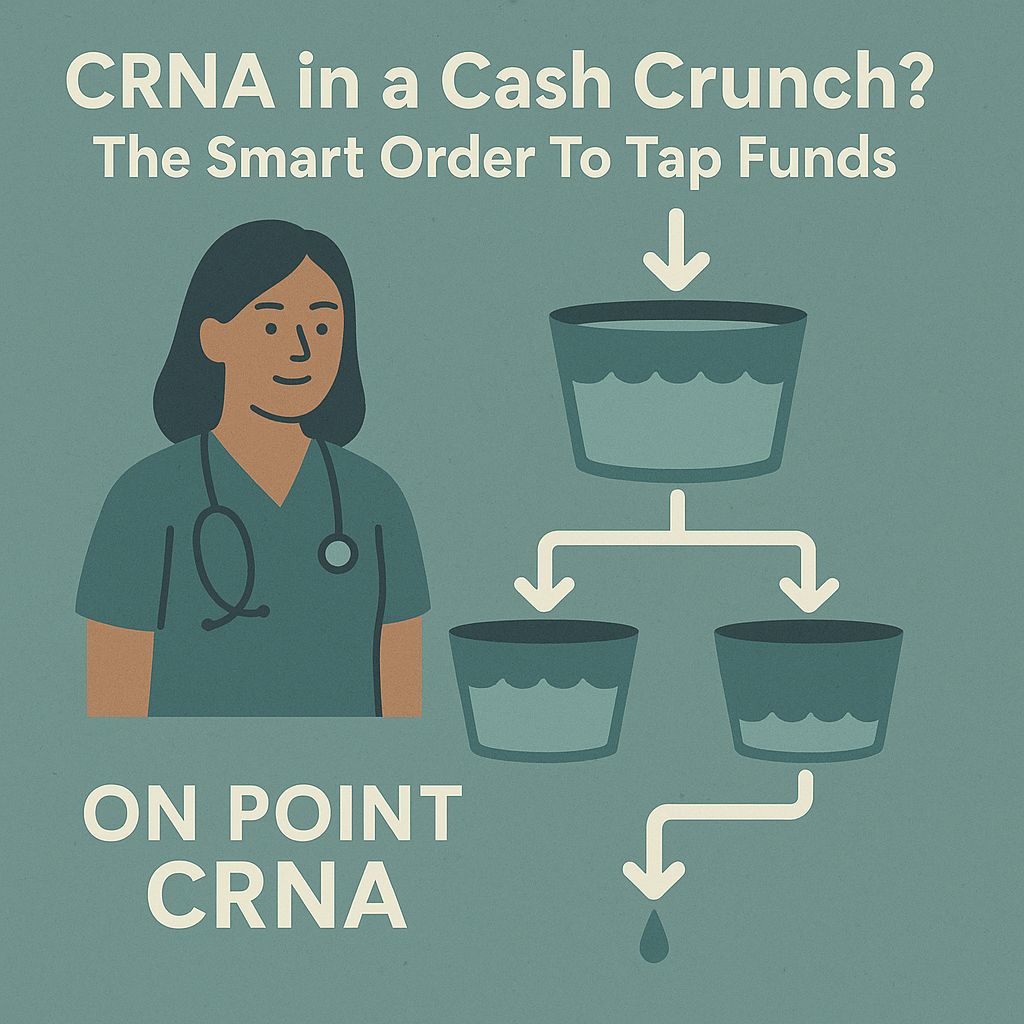You keep people safe while alarms are chirping and the room is buzzing. Money emergencies feel similar, just with fewer beeping monitors. The furnace dies in February, the dog eats a sock, or your car decides it wants a new transmission. Deep breath. Here is the clean sequence to find cash without wrecking your future.
First, quick triage
- Define the bill. How much, by when, and what is the true minimum to keep life moving.
- Ask for terms. Many hospitals, dentists, and utilities offer 0% payment plans if you simply ask.
- Hit the small valves. Pause subscriptions, delay non‑essential purchases, and sell any low‑value items collecting dust.
If the fire is still burning, follow the order below.
🟢 Green Zone: Lowest cost, lowest friction
1) Emergency Savings
This is why the fund exists. Pull what you need, then skip the guilt. A high‑yield savings account is ideal.
2) Short‑Term Investments
Money market funds or short‑duration bond ETFs that you can sell with minimal price movement. Still your money, still cheap.
3) HSA Reimbursement For Past Medical Expenses
This is the sleeper play. If you have an HSA and receipts from qualified expenses incurred after the HSA was opened, you can reimburse yourself now. That is tax‑free cash. Keep excellent records.
🟡 Yellow Zone: Still smart, but start taking notes
4) Roth IRA Contributions Only
You can withdraw your contributions any time without tax or penalty. Do not touch earnings. Do not touch recent conversions that have a five‑year clock. Use this only after the Green Zone.
5) Cash Value Life Insurance
If you own a whole life policy, a policy loan can bridge the gap with relatively low interest. Unpaid balances reduce the death benefit. Know your numbers before you pull the lever.
6) HELOC That Is Already Open
Lower rates than credit cards and flexible draws. Your home is collateral, so have a clear plan to pay it back. If you do not already have a HELOC, this option is not fast enough for a same‑week emergency.
🟠 Orange Zone: More structure, a bit more cost
7) 0% Intro APR Credit Card or Balance Transfer
If you qualify, this can be a useful bridge. Know the promo window and set an automatic payoff plan before you swipe.
8) Personal Loan From A Bank Or Credit Union
Fixed payment, clear finish line. Credit unions are often friendlier on rates and underwriting than big banks.
9) 401(k) Loan
You borrow from yourself and repay with interest. It is not taxable if you follow the rules. Leave your employer before it is paid back and the remaining balance can become a taxable distribution with penalties. Proceed carefully.
🔴 Red Zone: Only if the house is truly on fire
10) High‑Interest Credit Cards
Fast, yes. Expensive, also yes. If you are here, pair it with an aggressive payoff plan.
11) Early Withdrawal From A 401(k) Or Traditional IRA
This is the last resort. Taxes, penalties, and lost compounding make this the costliest cash you can find.
12) Payday or Title Loans
No. The fees are brutal and the debt spiral is real.
W-2 CRNAs
Aim for 3 to 6 months of living expenses in an emergency fund. Layer on a small taxable account for short-term goals. If you want extra security, open a HELOC while life is calm. That way you have a backup line of credit without paying to carry it.
1099 CRNAs
Your income will ebb and flow, so bump your reserves up to 6 to 12 months split between business and personal accounts. Always keep taxes in a dedicated savings bucket so you don’t “borrow” from the IRS by mistake.
SRNAs
You may not have much income yet, so focus on keeping your budget lean and your emergency savings at least one month of expenses. Avoid debt traps like credit cards or personal loans. If you receive a signing bonus when you graduate, resist the urge to splurge—use part of it to build a real emergency fund before lifestyle creep sets in.
Quick decision path
- Can you get a 0% payment plan from the provider → Yes, take it and stop here. → No, keep going.
- Do you have cash or short‑term investments → Yes, use them. → No, keep going.
- Do you have HSA receipts to reimburse → Yes, reimburse now. → No, keep going.
- Roth contributions available → Yes, tap contributions only. → No, keep going.
- Have a HELOC already open or a cash value policy → Yes, use the cheaper of the two. → No, keep going.
- Choose between 0% intro APR, personal loan, or 401(k) loan → Pick the lowest total cost with the clearest payoff plan.
- If none of the above work → Use a credit card only as a bridge while you set a repayment timeline. → Early retirement withdrawals and payday loans stay in the penalty box.
Post-op: Refill the bucket
- Restore any missed minimums immediately.
- Pay down the highest interest debt from this emergency.
- Rebuild the emergency fund to target levels.
- If you tapped Roth contributions or HSA funds, set a plan to replace those dollars over the next 6 to 12 months.
- Add small monthly auto‑saves so the bucket refills while you sleep.
The bottom line
Emergencies happen. You work in a world where calm beats chaos. Treat money the same way. Start green, move to yellow if you must, and avoid the red zone whenever possible. The goal is simple. Solve today’s problem without creating next year’s headache.

